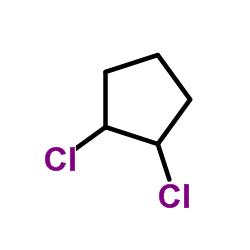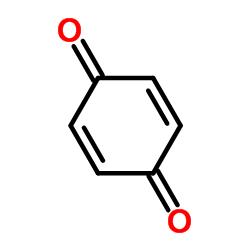
Concept explainers
a) Indole STRUCTURE GIVEN IN QUESTION
Interpretation:
The structure of indole is given. Its skeletal structure is to be drawn.
Concept introduction:
In skeletal structures the carbon atoms are not usually shown. Instead a carbon is assumed to be at each intersection of two lines and at the end of each line. The hydrogen atoms bonded to carbons are also not shown. The correct number of hydrogen atoms for each carbon atom is assigned keeping in mind that carbon has a valence of 4. The end of a line represents a carbon atom with three hydrogen atoms, CH3; a two-way intersection is a carbon atom with two hydrogen atoms, CH2; a three way intersection is a carbon with one hydrogen, CH; a four way intersection is a carbon with no attached hydrogen. Atoms other than carbon and hydrogen are shown. Nitrogen is trivalent and it can form one double bond and a single bond or three single bonds.
To draw:
The skeletal structure of indole.
Answer to Problem 42AP
The skeletal structure of indole is

Explanation of Solution
The molecular formula of indole is C8H7N. It has bicyclic structure consisting of a six membered benzene ring fused to a five membered pyrrole ring. In skeletal structures the carbon atoms are not usually shown. Instead a carbon is assumed to be at each intersection of two lines and at the end of each line. The hydrogen atoms bonded to carbons are also not shown. The correct number of hydrogen atoms for each carbon atom is assigned keeping in mind that carbon has a valence of 4. A three way intersection is a carbon with one hydrogen, CH; a four way intersection is a carbon with no attached hydrogen. Atoms other than carbon and hydrogen are shown. Nitrogen is trivalent and it is in a three way intersection as NH.
The skeletal structure of indole is

b) 1,3- pentadiene
Interpretation:
The structure of 1,3- pentadiene is given. Its skeletal structure is to be drawn.
Concept introduction:
In skeletal structures the carbon atoms are not usually shown. Instead a carbon is assumed to be at each intersection of two lines and at the end of each line. The hydrogen atoms bonded to carbons are also not shown. The correct number of hydrogen atoms for each carbon atom is assigned keeping in mind that carbon has a valence of 4. The end of a line represents a carbon atom with three hydrogen atoms, CH3; a two-way intersection is a carbon atom with two hydrogen atoms, CH2; a three way intersection is a carbon with one hydrogen, CH; a four way intersection is a carbon with no attached hydrogen. Atoms other than carbon and hydrogen are shown.
To draw:
The skeletal structure of 1,3- pentadiene.
Answer to Problem 42AP
The skeletal structure of 1,3- pentadiene is

Explanation of Solution
The molecular formula of 1,3- pentadiene is C5H8. It has two double bonds, one between C1-C2 and another between C3-C4. In skeletal structures the carbon atoms are not usually shown. Instead a carbon is assumed to be at each intersection of two lines and at the end of each line. The hydrogen atoms bonded to carbons are also not shown. The correct number of hydrogen atoms for each carbon atom is assigned keeping in mind that carbon has a valence of 4. The end of a line represents a carbon atom with three hydrogen atoms, CH3; a two-way intersection is a carbon atom with two hydrogen atoms, CH2; a three way intersection is a carbon with one hydrogen, CH. Based on these concepts the structure of 1,3- pentadiene can be written.
The skeletal structure of 1,3- pentadiene is

c) 1,2- dichloro cyclopentane
Interpretation:
The structure of 1,2- dichloro cyclopentane is given. Its skeletal structure is to be drawn.
Concept introduction:
In skeletal structures the carbon atoms are not usually shown. Instead a carbon is assumed to be at each intersection of two lines and at the end of each line. The hydrogen atoms bonded to carbons are also not shown. The correct number of hydrogen atoms for each carbon atom is assigned keeping in mind that carbon has a valence of 4. The end of a line represents a carbon atom with three hydrogen atoms, CH3; a two-way intersection is a carbon atom with two hydrogen atoms, CH2; a three way intersection is a carbon with one hydrogen, CH; a four way intersection is a carbon with no attached hydrogen. Atoms other than carbon and hydrogen are shown.
To draw:
The skeletal structure of 1,2- dichloro cyclopentane.
Answer to Problem 42AP
The skeletal structure of 1,2- dichloro cyclopentane is

Explanation of Solution
In skeletal structures the carbon atoms are not usually shown. Instead a carbon is assumed to be at each intersection of two lines and at the end of each line. The hydrogen atoms bonded to carbons are also not shown. The correct number of hydrogen atoms for each carbon atom is assigned keeping in mind that carbon has a valence of 4. Atoms other than carbon and hydrogen are shown. The molecular formula of 1,2- dichlorocyclopentene is C5H8Cl2. A cyclopentane ring is made up of five methylene groups. In 1,2- dichlorocyclopentene the two chlorine atoms are bonded to the first and second carbons replacing one hydrogen on each. They are shown in the skeletal structure.
The skeletal structure of 1,2- dichloro cyclopentane is

d) benzoquinone
Interpretation:
The structure of benzoquinone is given. Its skeletal structure is to be drawn.
Concept introduction:
In skeletal structures the carbon atoms are not usually shown. Instead a carbon is assumed to be at each intersection of two lines and at the end of each line. The hydrogen atoms bonded to carbons are also not shown. The correct number of hydrogen atoms for each carbon atom is assigned keeping in mind that carbon has a valence of 4. Atoms other than carbon and hydrogen are shown.
To draw:
The skeletal structure of benzoquinone.
Answer to Problem 42AP
The skeletal structure of benzoquinone is

Explanation of Solution
In skeletal structures the carbon atoms are not usually shown. Instead a carbon is assumed to be at each intersection of two lines and at the end of each line. The hydrogen atoms bonded to carbons are also not shown. The correct number of hydrogen atoms for each carbon atom is assigned keeping in mind that carbon has a valence of 4. Atoms other than carbon and hydrogen are shown. The molecular formula of benzoquinone is C6H4O2. The six carbons form a six membered ring with first and fourth carbons as carbonyl groups. The other four carbons have one hydrogen each.
The skeletal structure of benzoquinone is

Want to see more full solutions like this?
Chapter 1 Solutions
Organic Chemistry
- What is the name of the skeletal structure below?arrow_forwardConvert the following condensed formulas into skeletal structures. a. CH3CONHCH3b. CH3COCH2Brc. (CH3)3COHd. CH3COCle. CH3COCH2CO2Hf. HO2CCH(OH)CO2Harrow_forwardDraw the structures of 1-chloropropane in terms of Lewis-Dot, Kekule, condensed, and skeletal formulas.arrow_forward
- Convert the following condensed formulas into skeletal structures. a. CH3CONHCH3 b. CH3COCH2Br c. (CH3)COH d. CH3COCl e. CH3COCH2CO2H f. HO2CCH(OH)CO2Harrow_forwardDraw skeletal structures for the compounds including any cis–trans isomers.arrow_forwardExplain conventions are used for skeletal structures ?arrow_forward
 Introductory Chemistry: An Active Learning Approa...ChemistryISBN:9781305079250Author:Mark S. Cracolice, Ed PetersPublisher:Cengage LearningChemistry: Matter and ChangeChemistryISBN:9780078746376Author:Dinah Zike, Laurel Dingrando, Nicholas Hainen, Cheryl WistromPublisher:Glencoe/McGraw-Hill School Pub Co
Introductory Chemistry: An Active Learning Approa...ChemistryISBN:9781305079250Author:Mark S. Cracolice, Ed PetersPublisher:Cengage LearningChemistry: Matter and ChangeChemistryISBN:9780078746376Author:Dinah Zike, Laurel Dingrando, Nicholas Hainen, Cheryl WistromPublisher:Glencoe/McGraw-Hill School Pub Co Chemistry: Principles and ReactionsChemistryISBN:9781305079373Author:William L. Masterton, Cecile N. HurleyPublisher:Cengage Learning
Chemistry: Principles and ReactionsChemistryISBN:9781305079373Author:William L. Masterton, Cecile N. HurleyPublisher:Cengage Learning General, Organic, and Biological ChemistryChemistryISBN:9781285853918Author:H. Stephen StokerPublisher:Cengage Learning
General, Organic, and Biological ChemistryChemistryISBN:9781285853918Author:H. Stephen StokerPublisher:Cengage Learning Organic And Biological ChemistryChemistryISBN:9781305081079Author:STOKER, H. Stephen (howard Stephen)Publisher:Cengage Learning,
Organic And Biological ChemistryChemistryISBN:9781305081079Author:STOKER, H. Stephen (howard Stephen)Publisher:Cengage Learning,




